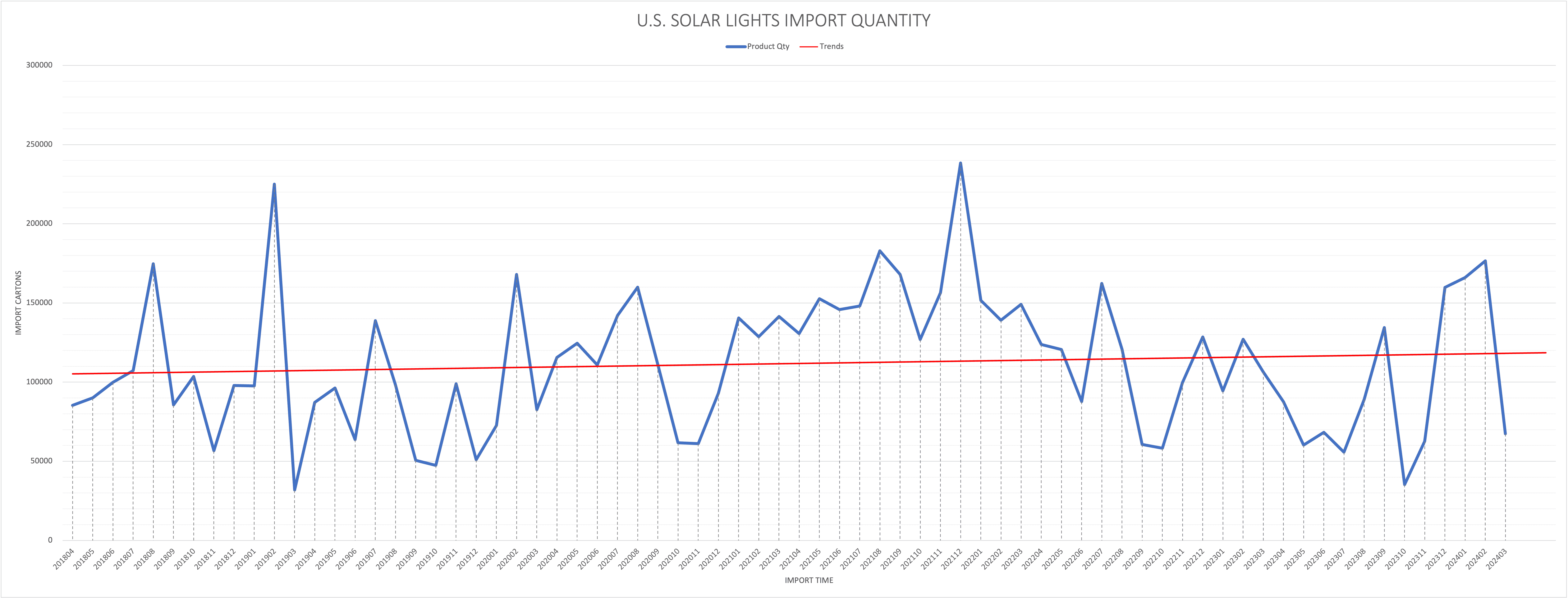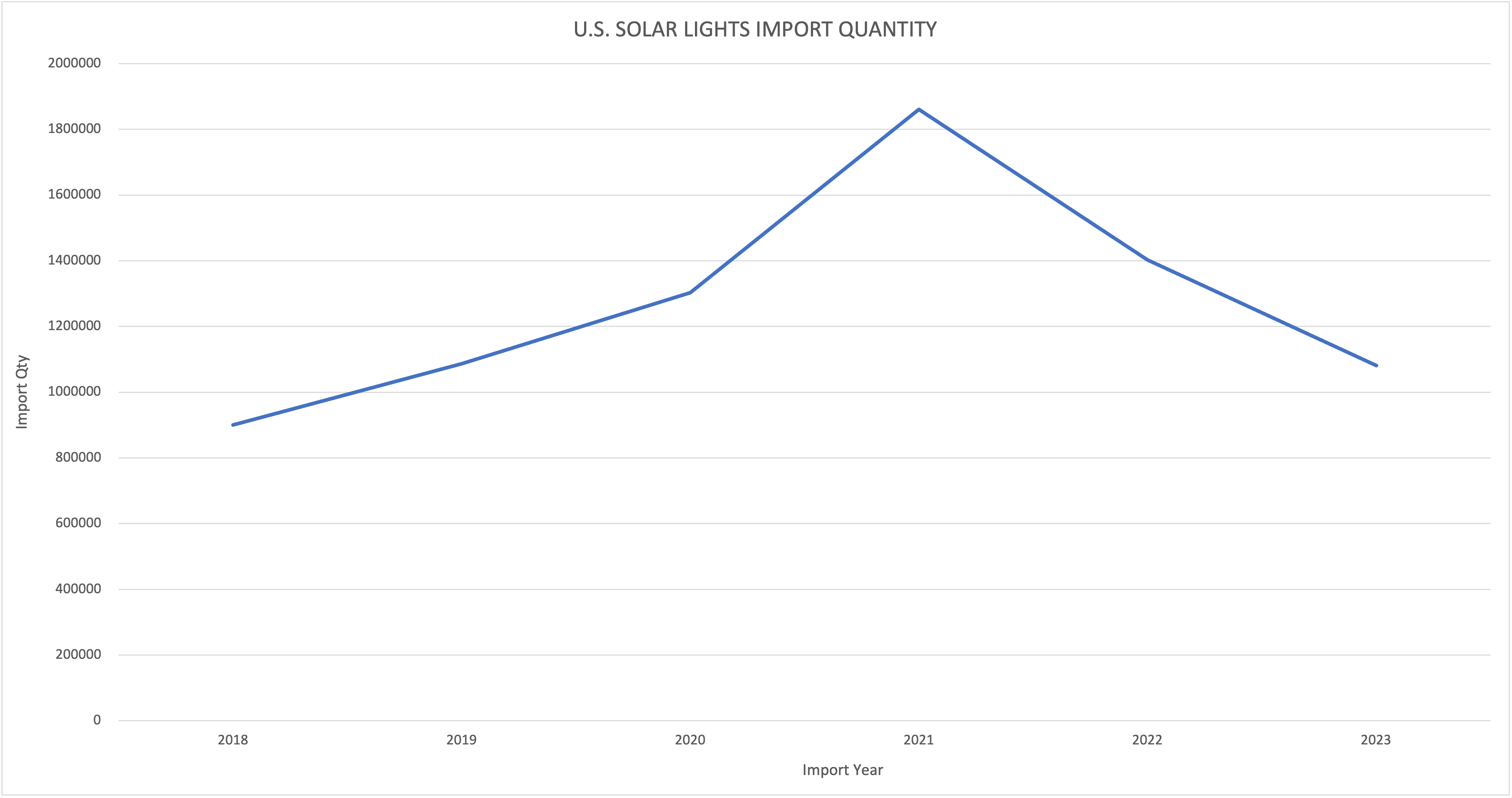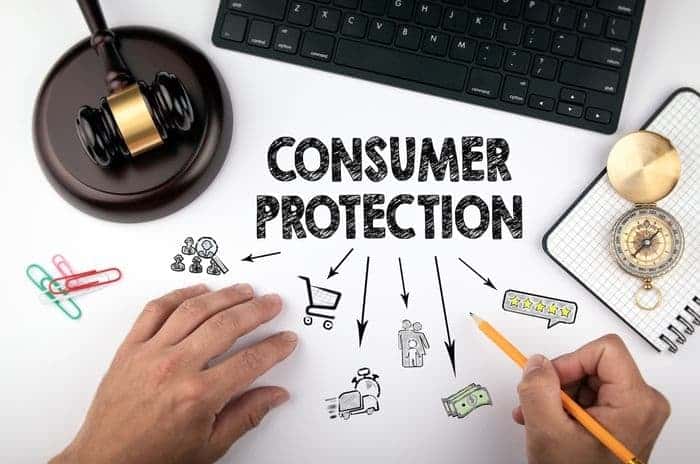U.S. Consumer Reports Of Solar Lights Of 2024
Home – Info Center – Blogs – Consumer Reports Of Solar Lights 2024

By Michael Zhang || Updated on 13rd March 2024
Michael Zhang is a seasoned professional with 15 years of experience in the solar lights industry. Throughout his career, he has been actively involved in product design and developing, gaining valuable expertise and insight into the industry. Known for his dedication and professionalism, Michael has contributed significantly to the growth and success of various solar lights projects. His extensive knowledge and hands-on experience make him a trusted authority in the field, and he continues to innovate and excel in his role.
As the importance of global renewable energy continues to grow and environmental awareness strengthens, solar lights, as a green and eco-friendly lighting solution, have gradually become the focus of attention.
This report aims to comprehensively analyze the current status, trends, and future prospects of the solar lighting industry, delving into its significant role and providing comprehensive industry analysis and development recommendations for industry consumers, manufacturers, and policymakers.
Through this report, we will conduct an in-depth analysis of the solar lighting industry from multiple dimensions including technological development, market size, industry competition, and policy support, hoping to contribute to the healthy development of the solar lighting industry, and promote the utilization of sustainable energy and environmental protection.
Table of Contents
Concept And Principle
Solar lights are a relatively niche category, distinct from conventional AC-powered lights. They do not rely on household voltage for operation; instead, they are driven by the voltage of batteries. Consequently, the installation scenarios for such products are highly flexible. Moreover, due to their low voltage, typically 3.7V or 3.2V, they are very safe. Furthermore, they typically use lithium-ion batteries or NI-MH batteries, and the batteries are replaceable. Consumers can extend the lifespan of solar lights significantly by replacing the batteries, which is also environmentally friendly.
During usage, firstly, solar energy is converted into electricity through the photovoltaic effect of the solar panel (also known as a photovoltaic module). During the daytime, when sunlight shines on the solar panel, photons excite the semiconductor material within the solar panel, causing a photoelectric conversion to occur. Specifically, photons excite electrons within the solar panel, causing them to transition from a negatively charged layer to a positively charged layer, thus generating a current. This way, solar energy is converted into electricity.
Next, the generated electricity is stored in the battery. As an energy storage device, the battery can store excess electricity for later use. When the electricity generated by the solar panel exceeds what is required for the LED lights, the surplus electricity is stored in the battery.
During the night, when illumination is needed, the stored electricity in the battery is released and converted into light energy through a control circuit. The control circuit, which is the intelligent part of the solar light, automatically controls the LED lights based on the intensity of light and the battery’s charge level. The released electricity drives the LED lights to emit light, thereby achieving the lighting function of the solar light.
Market Size And Growth Data
Below, we summarize the data on solar light imports to the United States from around the globe from April 2018 to April 2024.
In the first chart, the horizontal axis represents the import months, while the vertical axis represents the quantity imported. From the data, it can be observed that the peak demand for solar lights in the United States occurred in December 2021, with imports reaching 238,451 pieces. The lowest point of demand was in March 2019, with imports totaling only 31,817 pieces.

In the second chart, the horizontal axis represents the import years, and the vertical axis remains the quantity imported. The data shows that from 2018 to 2021, the demand for solar lights in the United States continued to rise. However, from 2021 to 2023, the demand for solar lights in the United States declined steadily.

In overall analysis, 2021 marked a turning point for solar lights. Due to the COVID-19 pandemic, consumer demand was suppressed in 2019-2020, and global production capacity was greatly reduced. As a result, in the first year after the end of the pandemic, which was 2021, there was a slight rebound. However, with the onset of an economic downturn and a more conservative consumer mindset, the sales of solar lights did not show a significant increase from 2021 to 2023. Based on feedback from our existing customers, we predict that sales trends for 2024 will remain roughly flat compared to 2023, with a continuous rebound expected to begin in 2025.
Market Driving Factors
In order to solve environmental problems, the United States has formulated the following policies to encourage the use of clean energy, because burning fossil fuels for power generation releases greenhouse gases such as carbon dioxide, causing global warming and climate damage. By shifting to clean energy sources such as solar, wind and hydropower, the United States aims to reduce its carbon footprint and mitigate the impacts of climate change on the environment and human health.

Renewable Energy Tax Credits: The federal government provides tax credits for renewable energy production, such as the Investment Tax Credit (ITC) for solar energy and the Production Tax Credit (PTC) for wind energy. These credits help reduce the cost of renewable energy projects and incentivize investment in clean energy technologies.
Renewable Portfolio Standards (RPS): Many states have implemented RPS, which require utilities to generate a certain percentage of their electricity from renewable sources by a specific date. These standards create a market demand for renewable energy and drive investment in clean energy infrastructure.
Clean Power Plan (CPP): Introduced during the Obama administration, the Clean Power Plan aimed to reduce carbon emissions from power plants by setting state-specific emissions reduction targets. Although the CPP faced legal challenges and was ultimately repealed by the Trump administration, there have been subsequent efforts to implement similar policies at the state level.
Energy Efficiency Standards: The federal government establishes energy efficiency standards for appliances, vehicles, and buildings to promote the use of energy-efficient technologies. These standards help reduce energy consumption and greenhouse gas emissions.
Research and Development Funding: The government allocates funding for research and development (R&D) in clean energy technologies. Programs like the Advanced Research Projects Agency-Energy (ARPA-E) support innovative research projects with the potential to transform the energy landscape.
Clean Energy Investments: The federal government, through agencies like the Department of Energy (DOE) and the Environmental Protection Agency (EPA), provides grants, loans, and other financial incentives to support clean energy projects and initiatives.
As a clean energy product, solar lights are very promising, not only because they utilize endless solar resources, but also because of their energy saving, environmental protection, reliable performance and growing market demand. With the further development of technology and reduction of costs, solar lights will be more widely used and promoted in the future.
Market Obstacles And Challenges
Despite some limitations in terms of price and performance, solar lights still face several obstacles and challenges in the market. In terms of quality, due to intense competition in the market, there is an ongoing price war, leading many manufacturers to resort to cheaper raw materials to reduce costs. As a result, more and more consumers end up purchasing solar lights of poor quality, eroding consumer confidence in solar lights over time.

Material And Manufacturing Costs
The price of solar lights is primarily influenced by the materials used in their manufacture, the production process, and the scale of production. High-quality components such as solar panels, LED chips, and storage batteries come with higher prices, thereby increasing overall costs accordingly. Additionally, refined manufacturing processes and large-scale production contribute to cost reduction and enhance product competitiveness.
Technological Level
The performance of solar lights largely depends on their technological level. For instance, factors such as the conversion efficiency of solar panels, the luminous efficiency of LED chips, and the capacity and lifespan of storage batteries affect the lighting effect and lifespan of solar lights. Higher technological levels result in better product performance, albeit potentially at higher costs.
Design And Features
The design and features of solar lights also impact their price and performance. Solar lights with features such as smart controls, motion sensing, and remote adjustment typically command higher prices. Moreover, aesthetically pleasing and well-structured solar lights are more likely to attract market favor.
Brand And Market Positioning
Different brands of solar lights may exhibit variations in price and performance. Established brands often boast higher technological levels and stricter quality control, thus commanding relatively higher product prices. Conversely, some lower-end products may offer lower prices, but their performance and quality may not be guaranteed.
Consumer Misconceptions And Concerns
After purchasing numerous solar light products, it was discovered that the overall product lifespan is usually only a few months. As a result, consumers have to constantly replace them, wasting a lot of time and money. Gradually, consumers come to believe that the quality of solar lights on the market is generally very poor, leading to a loss of confidence in such products. Specific concerns are reflected in the following aspects.

Short Lifespan
Some consumers may have misconceptions about the lifespan and performance of solar lights. They might believe that solar lights have unstable performance and short lifespans. However, in reality, the lifespan and performance of solar lights mainly depend on the quality of their components and manufacturing processes. High-quality solar panels, LED chips, and storage batteries can ensure the stability and long lifespan of solar lights.
Low Brightness
Consumers may have doubts about the brightness of solar lights. Some people may think that solar lights are not as bright as traditional streetlights. However, with technological advancements, modern solar lights can achieve or even exceed the brightness of traditional streetlights. Consumers can choose the appropriate brightness and power based on their needs.
Troublesome Installation And Maintenance
Some consumers may have concerns about the installation and maintenance of solar lights. They may worry that the installation process is complicated or maintenance is difficult. In reality, the installation of solar lights is relatively simple, requiring only following the instructions or guidance from professionals. As for maintenance, regular cleaning and inspection can ensure the normal operation of solar lights.
Insufficient Environmental Friendliness
Some consumers may still have doubts about the environmental and economic benefits of solar lights. They may believe that solar lights are not environmentally friendly or are costly. However, solar lights generate electricity from sunlight without the need for an external power source, reducing reliance on traditional energy sources and aligning with environmental principles. Moreover, although the initial investment may be high, in the long run, solar lights can save on electricity bills and reduce maintenance costs, providing significant economic benefits.
Consumer Demand And Trends
As the solar light market continues to mature, consumers are gradually developing clearer demands for solar lights, and these demands are guiding the solar light market towards improvement.

Environmentally Friendly Products
With the rise of awareness about climate change, pollution, habitat destruction, and other environmental issues, many consumers are becoming more conscious of the environmental impact of their purchasing decisions. They seek products that minimize harm to the environment, such as those with reduced carbon emissions, lower resource consumption, and less pollution.
Smart Products
With the increasing youthfulness of consumer groups, more and more consumers prefer to experience and use smart products. On one hand, smart products can customize their functions according to individual preferences and needs, meeting the demand of young people for personalized products. On the other hand, control through smartphones can make consumers’ lives more efficient and convenient.
Portable Products
Due to their light weight, compact structure, and ease of transport, portable solar lights are ideal for outdoor activities, travel, and emergency lighting. Consumers only need to place the solar lights in the desired location and let them charge during the day for nighttime illumination, making them very convenient to use. Therefore, the demand for portable solar light products is gradually increasing.
Higher-Quality Products
Higher-quality solar lights may have higher upfront costs, but they can significantly save long-term costs. Consumers realize that investing in higher-quality solar lights can reduce energy costs and lower maintenance costs over time. High-quality solar lights with durable components and efficient energy storage systems require less frequent replacement and maintenance, saving consumers overall costs.
Competitive Analysis Of The Market
Currently, there are numerous brands of solar lights in the United States market, making the competition fierce. However, many brands are still striving to expand into untapped markets, which is a promising development. The author of this article has identified the following solar lights brands, some of which focus on commercial lighting, while others focus on residential lighting. Some brands primarily target decorative purposes, while others focus on illumination. To facilitate easier reference for readers, we will present the information in tabular form.
| Solar Lights Brand | Product Type | Product Positioning |
|---|---|---|
| Dazuma | Residential & Commercial | Decorative&Lighting |
| Solarlighting | Commercial | Lighting |
| SharpTruck | Commercial | Lighting |
| Outdoor Solar Store | Residential & Commercial | Decorative&Lighting |
| Nitelighter | Residential | Lighting |
| TotalLEDS | Residential | Decorative&Lighting |
| Bell + Howell | Residential | Lighting |
| Beyond LED TECHNOLOGY | Commercial | Lighting |
| Classy Caps | Residential | Decorative&Lighting |
| Deck Impressions | Residential | Decorative&Lighting |
| Defiant | Residential | Lighting |
| Designers Edge | Residential | Lighting |
| eLEDing | Residential | Lighting |
| GAMA SONIC | Residential & Commercial | Decorative&Lighting |
| Glitzhome | Residential | Decorative |
| Gorilla Playsets | Residential | Lighting |
| Halo | Residential | Lighting |
| Hampton Bay | Residential & Commercial | Decorative&Lighting |
| Heath Zenith | Residential | Lighting |
| HomeBrite Solar | Residential | Decorative |
| Link2Home | Residential | Lighting |
| LUTEC | Residential & Commercial | Decorative&Lighting |
| MAXSA | Residential | Lighting |
| Merkury Innovations | Residential | Decorative |
| Millennium Lighting | Residential & Commercial | Decorative&Lighting |
| NATURE POWER | Residential | Lighting |
| Newhouse Lighting | Residential | Decorative&Lighting |
| Pinegreen Lighting | Residential & Commercial | Lighting |
| Pure Garden | Residential | Decorative |
| Ring | Residential | Decorative&Lighting |
| Sensor Brite | Residential | Lighting |
| Smart Living | Residential | Decorative |
| Southwire | Residential | Lighting |
| Sunforce | Residential | Lighting |
| Techko | Residential | Decorative&Lighting |
| Valley Forge Flag | Residential | Lighting |
| Wagan Tech | Residential | Lighting |
| WBM SMART | Residential | Decorative&Lighting |
| Westinghouse | Residential | Decorative&Lighting |
Future Development Predictions
As an environmentally friendly and energy-saving lighting solution, solar lights are expected to see more innovation and progress in the future. Specific breakthroughs may be seen in the following areas.
More Efficient Solar Cell Technology
With ongoing advancements in solar cell technology, solar lights’ solar panels are expected to become more efficient and stable, increasing energy conversion efficiency and thus improving lighting performance and lifespan.
Integration Of Smart And Internet Connectivity
Future solar lights may incorporate smart control technology, enabling features such as remote monitoring, intelligent adjustment, and internet connectivity. Through smart technology, solar lights can automatically adjust lighting brightness based on environmental illumination and usage demands, enhancing energy utilization efficiency.
Multifunctional Design And Diverse Applications
Future solar lights may trend towards multifunctional designs and diverse applications, integrating features such as integrated solar charging panels, storage batteries, night-time induction sensors, and security surveillance cameras to meet various lighting and functional needs in different scenarios.
Environmentally Friendly Materials And Manufacturing Processes
Future solar lights may adopt more environmentally friendly materials and manufacturing processes to reduce their environmental impact. For example, the use of biodegradable materials and recycled materials can lower carbon emissions and resource consumption during the production process.
Expansion of Application Areas
In addition to outdoor lighting, future solar lights may expand into more application areas such as urban street lighting, rural remote area lighting, camping outdoor activities, emergency disaster relief, etc., providing convenience and safety to a wider range of people.
Recommendations
In the future, it is essential to strengthen consumer education and market promotion efforts through various means and channels to increase awareness, credibility, and market competitiveness of solar light products, thereby driving the sustainable development of the solar light industry.
For example, conducting extensive publicity and educational campaigns to introduce consumers to the advantages and usage methods of solar lights, including their energy-saving, environmentally friendly, and safety aspects, can enhance consumer awareness and understanding of solar lights.
At the same time, relevant government departments should establish a brand certification system for solar light products to certify and label products that meet standards, thereby enhancing product credibility and market competitiveness while strengthening supervision and penalties for non-compliant products.
As manufacturers, we should also prioritize user reputation and satisfaction by improving product quality and after-sales service levels. Through word-of-mouth and recommendations from users, we can expand the influence and market share of solar light products.
With many countries and regions implementing policies and subsidy measures to encourage the use and development of solar lights, there is still significant market potential in the global solar light market, especially in developing countries and regions, where the solar light market is expected to grow more rapidly.
Conclusion
Solar lights, as an environmentally friendly and energy-saving lighting solution, have gained increasing attention and favor from consumers. With the rise of environmental awareness and the promotion of renewable energy, the solar light market is expected to continue its growth trend. Additionally, the development of the solar light market benefits from ongoing innovations in solar cell technology, LED technology, and smart control technology. In the future, with technological advancements and cost reductions, the performance and functionality of solar lights will be further enhanced.
Related Blogs
Share Via:
Get in Touch with Us Now!
Got questions or feedback? We’d love to hear from you! Just fill out the form below, and our friendly team will respond ASAP.
